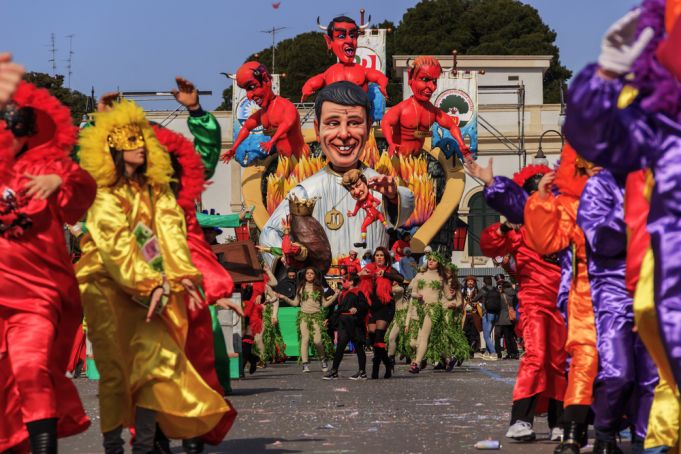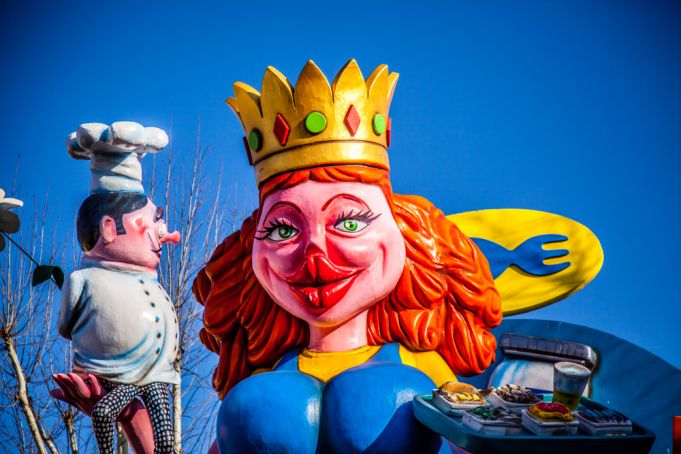Best places in Italy to celebrate Carnevale in 2025.
Italy marks carnival season each year with fancy dress costumes and masks, elaborate parades and food, with carnevale customs varying from region to region.
Traditionally carnival is the period of fun and festivities preceding the 40 days of fasting and prayer that Christians observe during the solemnity of Lent, which begins on Ash Wednesday.
Carnevale 2025 begins officially on Sunday 16 February and ends with Shrove Tuesday on 4 March.
What are the origins of Carnevale?
The origins of carnival can be traced back to the ancient Roman festival of Saturnalia when the social order was reversed and slaves exchanged places with their masters.
Others suggest its origins date back to pagan rites and ceremonies to mark the passage from winter to spring.
Over the centuries, Carnevale festivities were adapted to fit in with the Catholic liturgical calendar, concluding on Martedì Grasso, the day before Ash Wednesday.
As a result, carnevale does not have fixed annual dates and is determined by which day Easter falls each year (20 April in 2025).
The word “Carnevale” is likely to have originated in Venice, the Italian city best associated with the festival.
The original meaning of the word is open to interpretation however many believe it is derived from the Latin expression carnem levare, literally meaning "to remove meat".
During carnevale season in Italy it is common to see children in fancy dress, festooning the streets of towns and cities with brightly-coloured confetti.
Here we take a look at some of Italy's best known destinations for celebrating Carnevale.
Venice
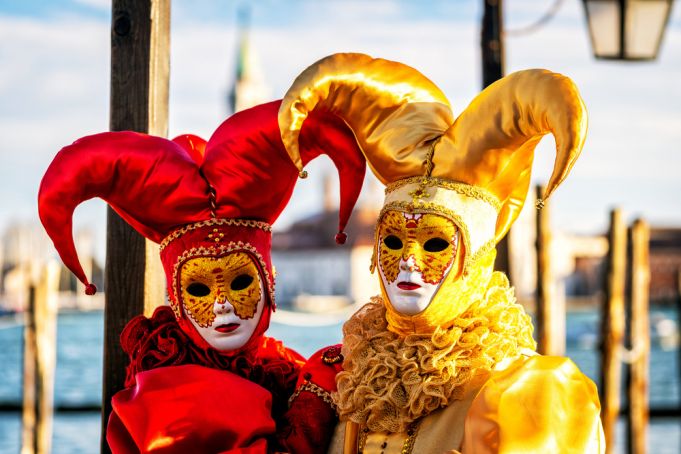
Viareggio
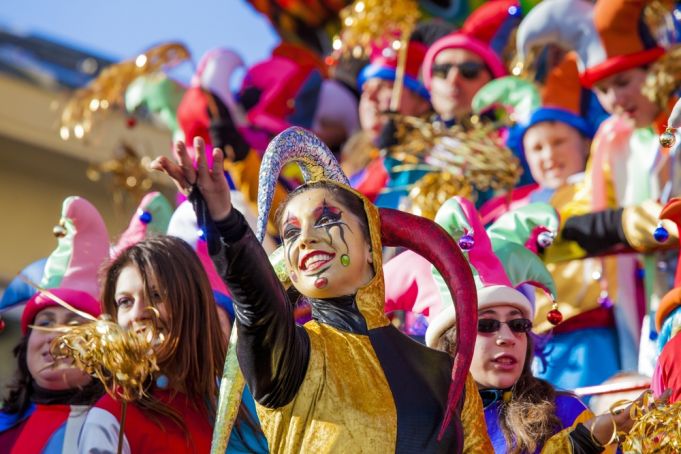
One of Italy's best known carnivals, with a tradition dating to 1873, Carnevale is serious business in this coastal city in northern Tuscany.
Central to the carnival festivities are the Sunday parades along the seafront, featuring gigantic floats with enormous papier-mâché caricatures poking fun at politicians and celebrities.
Viareggio is also home to the Burlamacco, a masked carnival clown created in 1930 by the futurist painter Uberto Bonetti.
For details of the 2025 celebrations see Viareggio Carnevale website.
Ivrea
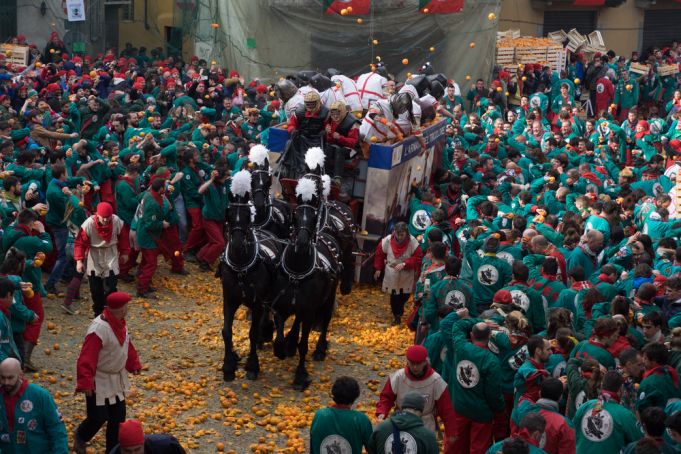
This town near Turin in the northern Piemonte region is famed for its ancient carnival celebrations, particularly the Battle of the Oranges, essentially a huge food fight.
Staged during the final days of Carnevale, the spectacle evokes the defiance of the town's inhabitants who rose up against their tyrannical overlord in the Middle Ages after he attempted to rape a local woman on her wedding night.
According to tradition she reacted by beheading him, sparking a rebellion. This struggle for freedom is commemorated in the annual battle that pits aranceri orange handlers on foot - representing the people - against aranceri in carriages - representing the tyrant.
For details about the 2025 carnival see Storico Carnevale di Ivrea website.
Mamoiada
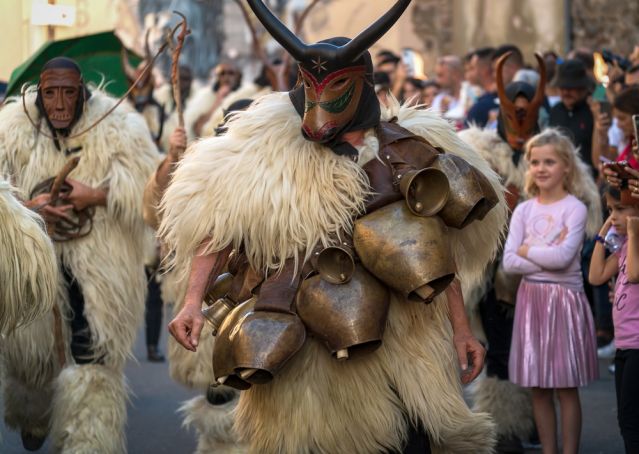
One of Italy's most curious carnival celebrations can be found in Mamoiada, in the Nuoro province of Sardinia.
Instead of the colourful carnival floats normally associated with carnevale, the festival in Mamoiada features dancing participants in distinctive costumes with menacing-looking masks.
The dance is between the Mamuthones - dressed in black sheepskins, black wooden masks and heavy cowbells - and the Issohadores - wearing white masks, white and red costumes, and carrying a lasso rope with which they "catch" spectators.
For updates on the 2025 festivities see Comune di Mamoiada website.
Acireale
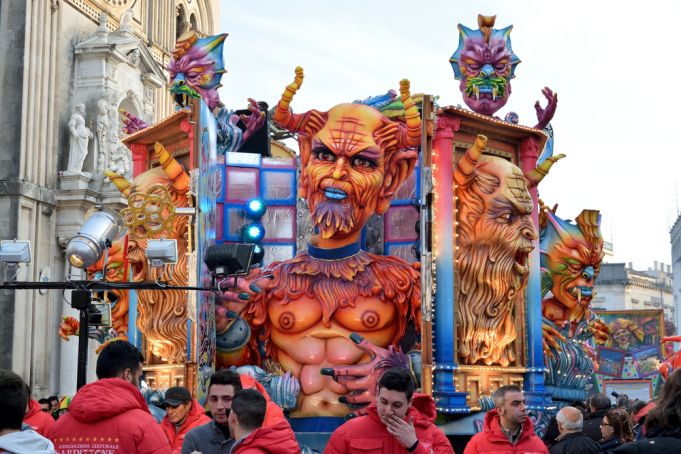
Fano
Putignano
